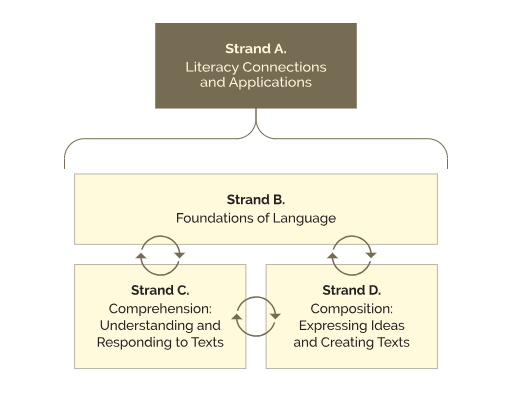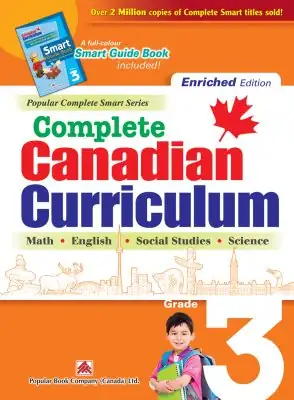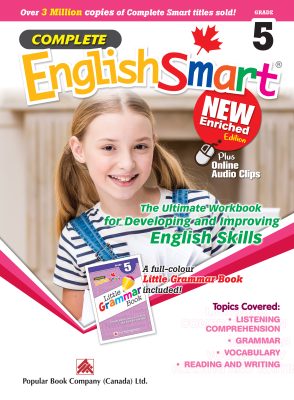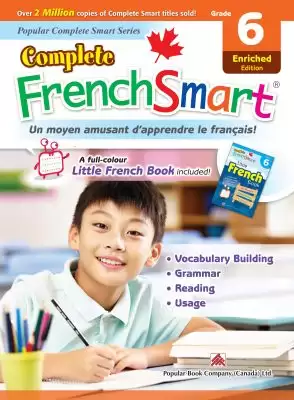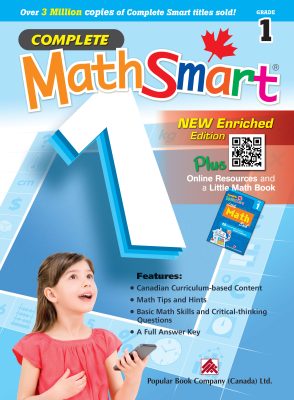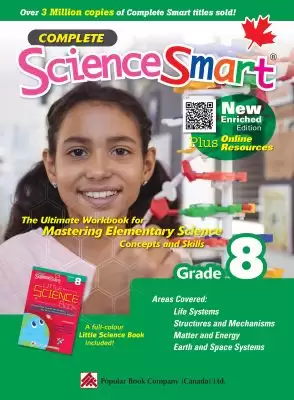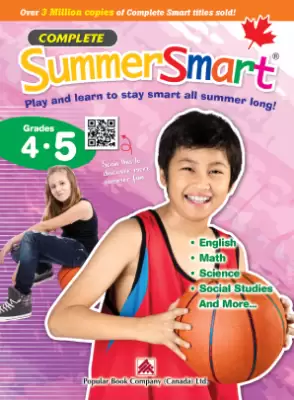In September 2023, students across Ontario will begin the new Language Curriculum. The last curriculum introduced was in 2006 and referenced things like cds and dvds. This curriculum was almost 20 years old, and an updated curriculum was inevitable. But what are some of the changes you can expect to see? As a parent, the biggest change you will notice will come on your child’s report card. Instead of having the language mark divided into four parts: writing, reading, media literacy and oral communication; it will be one mark. The reasoning behind this has to do with this below infographic taken directly from the Ontario Language Curriculum and the idea that all the strands are connected.
The new strands that have been introduced include: Literacy Connections and Applications which incapsulates Foundations of Language which is made up of Comprehension and Composition.
Strand A (Literacy Connections and Applications) is broken up into three categories:
- Transferable skills – how reading, creating, listening, etc. all allow them to express their voice and engage in the learning process.
- Digital media literacy – understanding, using and reflecting on the power of online tools to form messages, ideas, etc.
- Applications, connections and contributions – this adds a layer of cultural relevance and responsibility, students learn about contributions, lived experiences, and identity
Strand B (Foundations of Language) is divided into three categories as well:
- Oral and non-verbal communication – students will learn how to communicate meaning in various ways (writing, speaking, etc.)
- Language foundations for reading and writing – students will be taught through a scientific approach to reading and spelling
- Language conventions for reading and writing – students will gain an understanding of grammar, punctuation, etc.
Strand C (Comprehension) has three categories that include:
- Knowledge about the texts – the text elements, perspectives, and use their own background knowledge to enhance their learning
- Comprehension strategies – which include drawing on prior knowledge, making predictions, monitoring their comprehension and summarizing ideas
- Critical thinking in literacy – students will analyze and reflect on perspectives
Strand D (Composition):
- Developing ideas and organizing content – students will learn to research, gather information and find reliable sources
- Creating texts – students will create texts of different forms (it may be videos, writing, etc. and also incorporates learning printing, cursive writing and typing)
- Publishing, presenting and reflecting – students will engage in reflection on a final product they have created
The new curriculum aims to meet the needs of the diverse learners across Ontario while adhering to the Human Rights Commission’s Right to Read document while evolving with the current times.
To learn more visit:
https://www.dcp.edu.gov.on.ca/en/curriculum/elementary-language/context/strands
https://www.dcp.edu.gov.on.ca/en/key-changes-language
https://beta.ctvnews.ca/local/toronto/2023/6/23/1_6453644.amp.html



